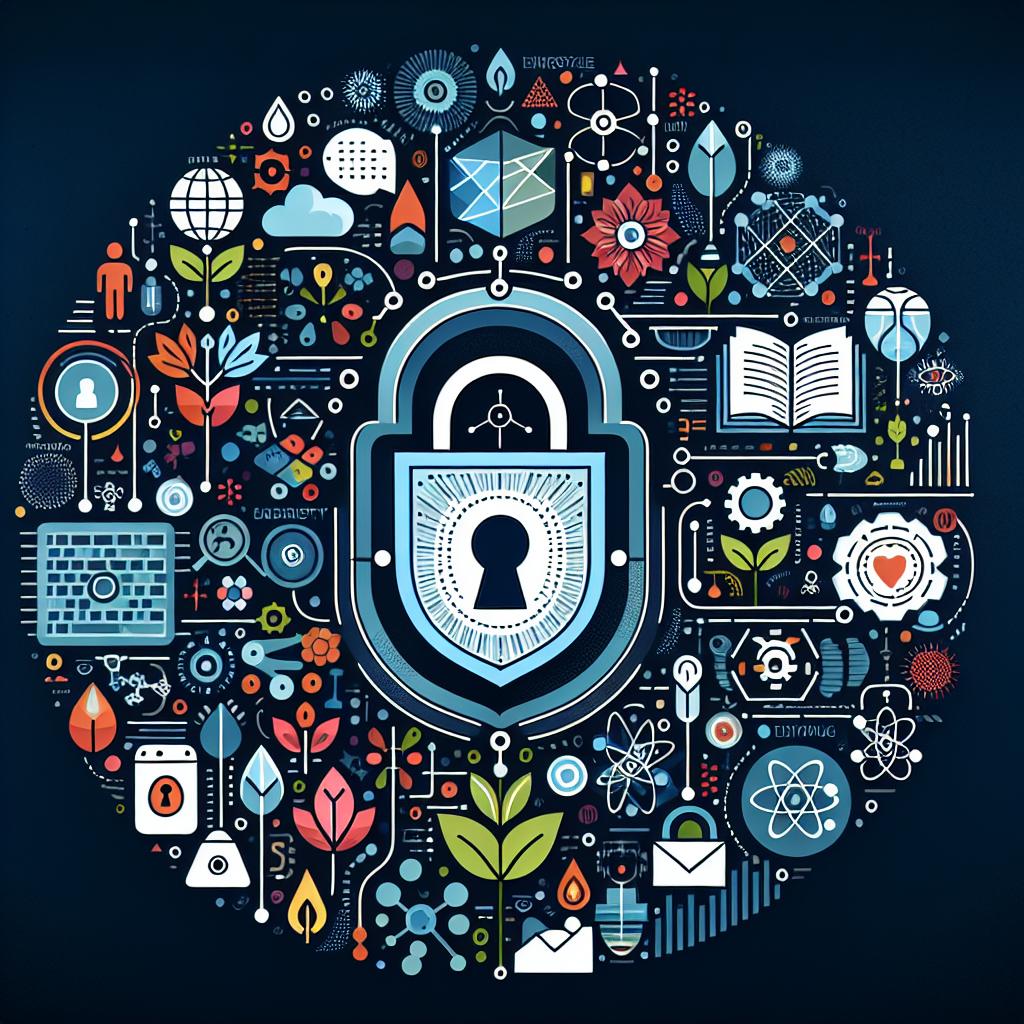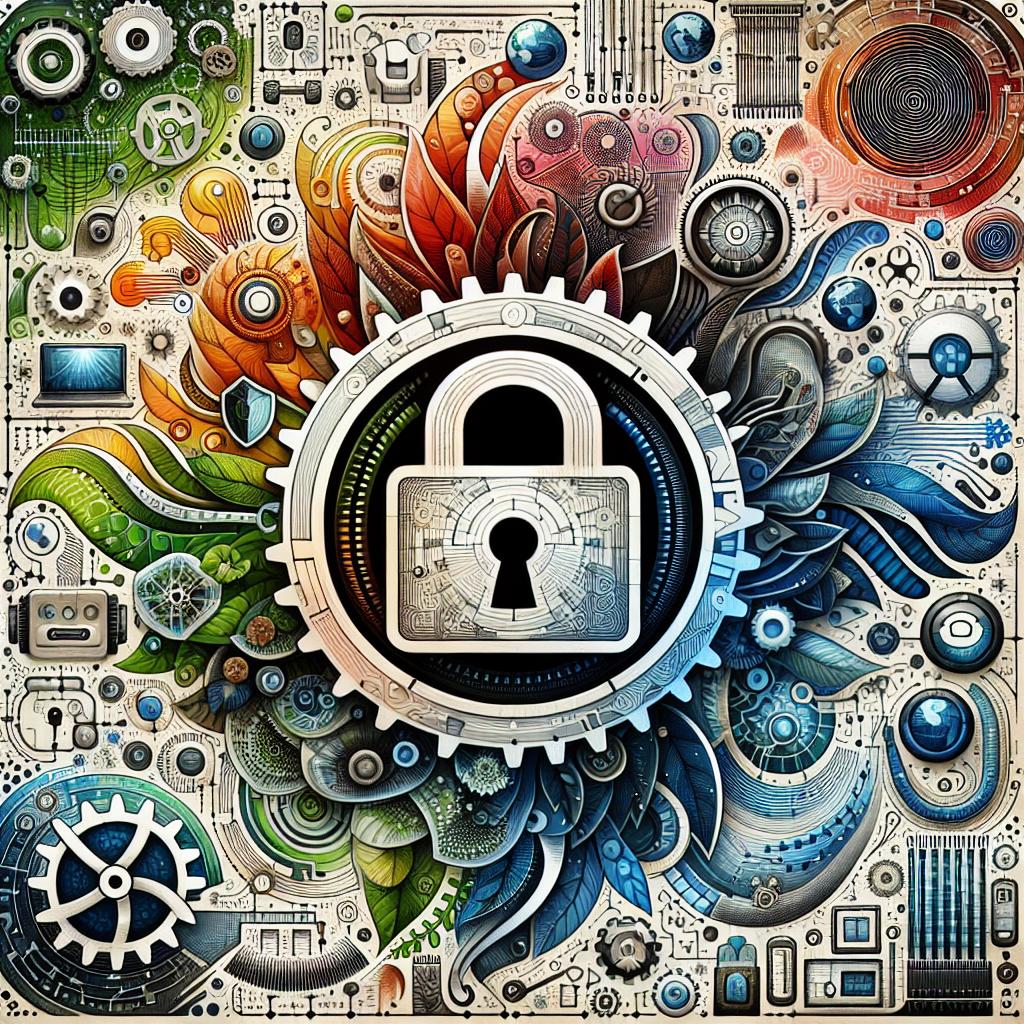In an age where technology unfolds like a pop-up book, revealing wonders at every turn, chatbots have emerged as our tireless companions, eager to assist us—from answering our burning questions to managing our daily tasks. These digital confidants are becoming so integrated into our lives that it’s easy to forget they are more than just lines of code; they’re repositories of potentially sensitive data. But as we engage in these friendly exchanges, have we stopped to consider what happens to our personal information when the conversation ends? Welcome to the world of chatbot security—a vital realm where data privacy and protection take center stage. Join us as we explore the charming yet complex landscape of chatbot technology, uncover the hidden risks lurking beneath the surface, and discover how to ensure our digital buddies are not just helpful, but also guardians of our privacy. Let’s embark on this journey to safeguard our data together!
The Foundation of Trust: Understanding Data Privacy in Chatbots
In the digital age, the backbone of user engagement lies in fostering a secure environment where personal information is respected and protected. Data privacy is crucial in chatbot interactions; it builds the necessary trust between users and technology. To establish a solid foundation, chatbot developers must prioritize transparency, user consent, and the implementation of strict security protocols. This means that users should be informed of how their data is collected, utilized, and stored. Emphasizing clear communication around data usage reassures users, making them more likely to engage without hesitation.
Moreover, ensuring robust data privacy mechanisms involves adopting advanced technologies. Here are some key practices to consider:
- Encryption: All data transferred through chatbots should be encrypted to prevent unauthorized access.
- Anonymization: Retaining user anonymity can significantly reduce privacy risks.
- Regular Audits: Conducting routine security assessments helps identify vulnerabilities.
- User Control: Giving users the option to opt-out or delete their data fosters trust.
Additionally, adopting a proactive stance towards compliance with legal frameworks such as GDPR will reinforce the commitment to data privacy.

Guarding the Gates: Key Security Measures for Chatbot Development
When developing chatbots, implementing robust security measures is essential to safeguard user data and maintain trust. One of the fundamental steps is to ensure data encryption, which protects sensitive information during transmission. By using protocols such as HTTPS and TLS, developers can prevent unauthorized access to data exchanged between users and chatbots. Additionally, consider employing multi-factor authentication (MFA) to verify users’ identities, adding an extra layer of protection against potential breaches.
Another critical aspect is to maintain regular security audits and updates. This involves assessing the chatbot’s code and its environment for vulnerabilities, as well as applying timely patches to address any discovered threats. Furthermore, adopting a privacy-by-design approach during development can significantly reduce risks. By incorporating privacy principles right from the start, you ensure that data handling practices are transparent and compliant with regulations like GDPR. Here’s a simple overview:
| Security Measure | Description |
|---|---|
| Data Encryption | Secures data in transit to prevent unauthorized access. |
| Multi-Factor Authentication | Verifies users with multiple credentials, enhancing security. |
| Regular Audits | Identifies vulnerabilities and ensures timely updates. |
| Privacy-By-Design | Incorporates privacy in every phase of chatbot development. |

Beyond Compliance: Best Practices for Data Protection and User Trust
To build user trust and ensure robust data protection, businesses must go beyond mere compliance with regulations. This proactive approach should be woven into the very fabric of chatbot development and deployment. Incorporating end-to-end encryption safeguards user interactions while ensuring that sensitive information remains confidential. Additionally, implementing anonymization techniques can prevent the identification of users while allowing for useful data analysis. By adopting practices such as regular security audits and penetration testing, organizations can identify vulnerabilities before they are exploited, creating a secure environment for users.
Fostering a culture of transparency is equally important. Keeping users informed about how their data is collected, stored, and used will go a long way in building trust. Consider the following best practices:
- Privacy Policies: Clearly articulate policies in user-friendly language.
- User Consent: Obtain explicit consent before collecting sensitive information.
- Data Minimization: Collect only data necessary for functionality.
- Regular Updates: Inform users promptly about any changes to security policies.
By integrating these elements into chatbot operations, companies can create a secure and trustworthy experience for users. In doing so, they not only comply with regulations but also cultivate strong relationships built on trust and respect for privacy.

Navigating the Future: Innovating Chatbot Security with Emerging Technologies
In an age where chatbots are becoming increasingly integral to both customer service and personal assistance, ensuring their security against data breaches and privacy violations is paramount. Innovative technologies, such as blockchain, AI-driven anomaly detection, and multi-factor authentication, are paving the way for robust security frameworks. By leveraging decentralized networks, organizations can enhance the integrity and transparency of chatbot communications, making it significantly harder for malicious actors to manipulate data or impersonate users. Additionally, AI systems can analyze user interactions to identify patterns, allowing for real-time threat detection and faster responses to potential security incidents.
Moreover, the incorporation of encryption techniques and secure access protocols must be a priority in chatbot design. By deploying advanced encryption standards, sensitive user information can be safeguarded during transmission, ensuring that even if data is intercepted, it remains unreadable. The implementation of automatic security updates can also keep chatbots aligned with the latest vulnerabilities in security technology, significantly reducing the risk associated with outdated software. The fusion of these emerging technologies not only fortifies chatbots against potential attacks but also nurtures trust among users, promoting a safer digital interaction landscape.
Closing Remarks
As we wrap up our journey through the fascinating world of chatbot security, it’s clear that protecting data privacy isn’t just a checkbox on a tech checklist; it’s a commitment to trust and transparency. In an era where conversations with these digital companions can feel almost personal, ensuring that our sensitive information is safeguarded is more important than ever.
So, whether you’re a developer crafting the next amazing chatbot, a business leader integrating these digital helpers, or a curious user navigating the tech landscape, remember: security is a shared responsibility. Embrace best practices, stay informed about potential vulnerabilities, and always prioritize the privacy of those engaging with these tools.
As we look ahead to a future filled with increasingly intelligent and intuitive chatbots, let’s make a pact to keep the conversation secure. After all, a friendly chatbot is only as good as the trust it holds with its user. Here’s to a safer, more privacy-conscious digital world, where every chat is not only engaging but also secure. Happy chatting!

